Latest NFL Super Bowl News


Nick Sirianni Confirms Breaking 132-Year College Football Program’s Historic Drought & Sends Strong Message on Faith After Eagles’ Super Bowl Win

Michael Strahan’s Daughter, Now Cancer-Free, Shows Fresh Hair Growth During Super Bowl as NFL Legend Reveals Real Reason for New Orleans Visit

NASCAR Fans Throw Shade at Joey Logano’s Reputation as Awkward Crossover With Tom Brady Goes Viral

Kendrick Lamar’s Halftime Show Triggers Magic Johnson’s Honest Reaction Amid Controversial Drake Diss

Saquon Barkley Saves Shaquille O’Neal From Embarrassment With Massive Super Bowl Upset


More NFL Super Bowl News
Chase Elliott Continues $1M Pursuit at Super Bowl Despite NFL’s Open Kevin Harvick Disrespect
After ignoring Cup Series veteran Kevin Harvick, the NFL recognizes Chase Elliott at Super Bowl LIX.

Amidst Super Bowl Excitement, Drivers Unanimously Pledge Former Cup Driver to NFL
NASCAR drivers name Corey LaJoie as the top quarterback pick, blending motorsports with football fun in a lighthearted debate.

Amid Heated FOX Debate, Roger Penske Stuns Fans at the Super Bowl With Iconic Duo
Amid a heated debate over FOX coverage, Roger Penske’s drivers Joey Logano and Josef Newgarden steal the Super Bowl spotlight in a perfect motorsports crossover.

Former WNBA Champion Comes Clean on Super Bowl Officials While Her Support for Eagles Stands Strong
Former WNBA champion passionately supports Eagles' Super Bowl run while calling out the one thing early in game.
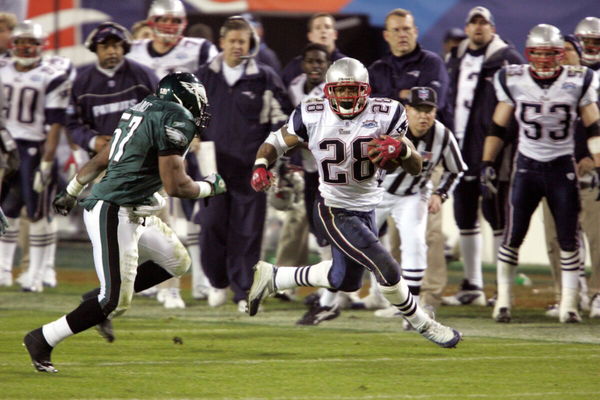
Everyone Is Saying the Same Thing About Kendrick Lamar’s Half-Time Performance at Super Bowl LIX
Kendrick Lamar shook the Super Bowl stage with bold moves, but reactions to his performance are mixed. Find out why.

Christian McCaffrey’s Wife Olivia Culpo Announces TV Return After Ending 15-Month Hiatus With FOX’s Show
San Francisco 49ers' Christian McCaffrey's wife, Olivia Culpo is getting ready to make another tv comeback after a 15 month hiatus!

Who Is Eagles Mascot Swoop? How Much Are They Paid? Who’s Behind the Mask?
Do you know how important Swoop is for the Philadelphia Eagles? The mascot may be a fun side character for many, but a lifesaver for some.
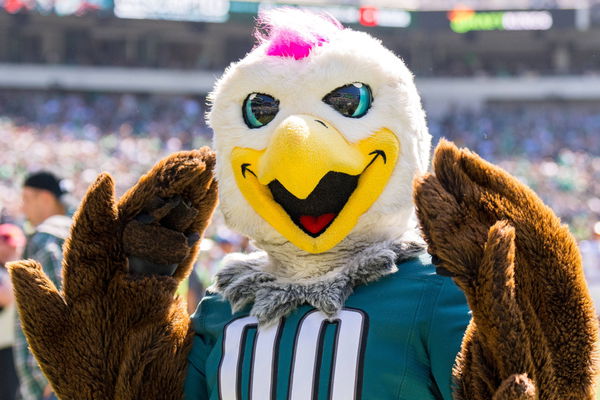
How Much Is NFL Paying Kendrick Lamar & SZA for Super Bowl Half-Time Show? Salary & Earnings Revealed
We all know by now Kendrick Lamar will headline the Super Bowl LIX halftime show. But do you know how much he is taking to perform?

La La Anthony Responds to Donald Trump’s Super Bowl Presence as She Kickstarts NFL Weekend in Glam
La La Anthony reacts to Donald Trump's historic Super Bowl attendance while celebrating NFL weekend in style at a star-studded event.

What Are Patrick Mahomes’ Super Bowl Stats? Record, Wins, Appearances, MVP Wins
A lot is riding on Patrick Mahomes as the Chiefs go for a historic Super Bowl 3-peat. Mahomes himself is chasing some records.

NBA Speaks on Super Bowl Frenzy as Draymond Green Finds LeBron James and Former Teammate at Crossroads
NBA stars are split on the Super Bowl, with Draymond Green picking the Eagles while LeBron and KD back the Chiefs.

Danica Patrick Was in Tears After Witnessing Dale Jr.’s $25M Worth Partner’s Super Bowl Performance
Danica Patrick who has set new milestones of record in her racing career, recalled Dale Earnhardt Jr.'s partner Super Bowl Performance that...

Bill Belichick Makes Move for Son Brian Belichick Amid UNC President’s Stern Warning
North Carolina's Bill Belichick pushes to hire son Brian Belichick despite UNC president's crackdown on trustee overreach

Is Lauren Daigle Married? All About Super Bowl 2025 Performer’s Family, Illness, Tattoos, Religion & More
Learn more about Lauren Daigle's family, religion, Illness, tattoos and more as she is all set to perform in the pregame show this Super Bowl.

What Is Oren Burks’ Salary? All About Eagles LB’s Net Worth, Contract, and More
Discover Oren Burks' journey from the Packers to the Philadelphia Eagles! Explore his salary, net worth, and contract details in 2025!

“Your QB Is Not Patrick Mahomes”: Jerry Jones Given Brutal Reality Check by Cowboys Legend Over Major Issues
Jerry Jones thinks he has it all figured out. The changes he will make will put the Cowboys on top. But one NFL legend begs to differ.

Geno Auriemma Drops Bold Super Bowl Prediction That Could Infuriate ‘Swiftie’ Caitlin Clark
Why might UConn coach Geno Auriemma’s Super Bowl speculation not go over well with WNBA star Caitlin Clark?
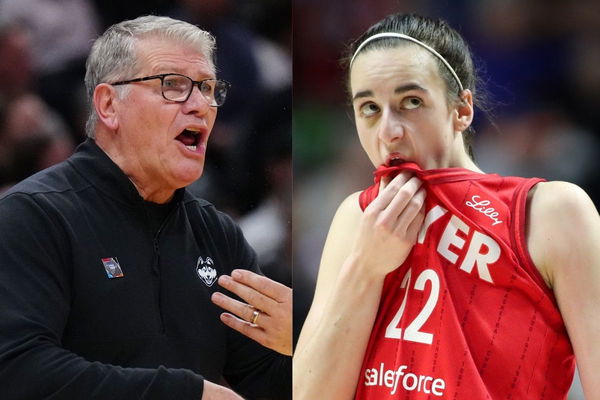
Patrick Mahomes Helps Pat Riley Find Relief From Jimmy Butler Saga as NFL Strikes 6-Figure Deal Before Superbowl
Heat boss Pat Riley receives help from Patrick Mahomes ahead of Superbowl with a major 6-figure good news to keep Jimmy Butler off his mind.
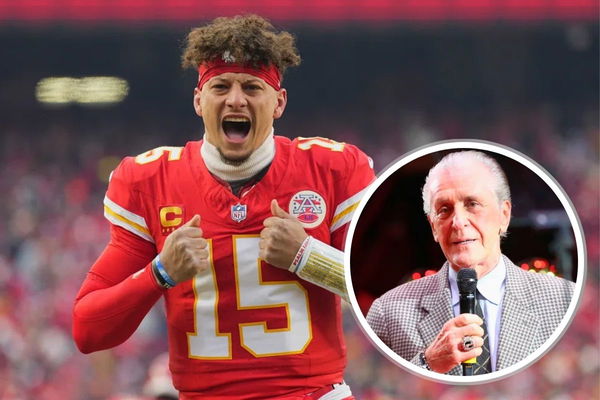
Who Is Nick Bolton’s Girlfriend? All You Need to Know About Phanel Ellese
Discover the latest updates on Nick Bolton's relationship status. Find out what is his relationship with Phanel Ellese. Follow essentiallysports for the latest updates.

Commanders Ex-HC Joe Gibbs’ Grandson Trashes Clint Bowyer’s Claims With Bold Chiefs Prediction
Star Joe Gibbs Racing driver rubbishes Clint Bowyer's massive Super Bowl claim ahead of the Kansas City Chiefs vs Buffalo Bills game.

NFL Reporter Sends Key Warning to Jets Against Aaron Glenn With Aaron Rodgers’ Future Hanging in Balance
Aaron Glenn looks like the right profile to turn the New York Jets into a respectable team, who would at least win more than lose.

Harry Kane Predicted to Chase NFL Dream, After Reaching “Beginning of the End” With Soccer
Gary Neville shares his thoughts on Harry Kane’s NFL ambitions as he believes the England striker nears the 'beginning of the end' in soccer

After Patrick Mahomes’ Confession, Ex-NFL Coach Drops Shocking Claim on Chiefs’ Playoff Future
Check out what does Rex Ryan, the former NFL coach has to say over the Chiefs' playoffs future after Patrick Mahomes confession.

Jared Goff Salary: $100M QB’s Lucrative Lions Contract Extension Puts Even Patrick Mahomes to Shame
Patrick Mahomes has competition! Jared Goff's impressive season and record contract make him a top QB. Explore his stats now!
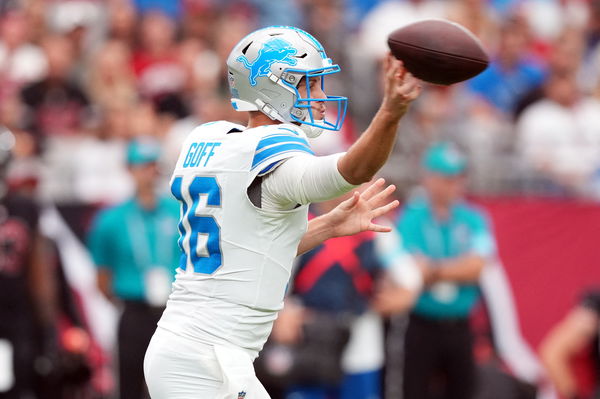
Roger Goodell Hints at International Super Bowl Despite Controversial London & Brazil Games Amid NFL’s Aggressive Expansion Plans
Goodell suggests international Super Bowl, 16 annual games abroad, amid refereeing controversies and expansion challenges.

Who is Melissa Stark’s Husband Mike Lilley? Meet Veteran NBC Presenter’s Husband of Two Decades
Here is all we need to know about NBC presenter, Melissa Stark's husband, Mike Lilley, and when they got married.

About NFL Super Bowl
Super Bowl: The Grand Spectacle
A sunny day in New York on January 15, 1967, saw the league’s first Super Bowl showdown between the Green Bay Packers, led by coach Vinci Lombardi, and the Kansas City Chiefs, led by coach Hank Stram. It marked the inaugural AFL-NFL Championship game, held at the Los Angeles Coliseum, captivating a 65 million-strong TV audience, as the Packers secured a 35-10 victory. From that time, now it has been 57 years, and the NFL is about to witness Super Bowl LVIII.

via Imago
Credits: Imago & Social Media
NFL Super Bowl is a yearly championship game held by the National Football League (NFL). This is played between the champions of the AFC and NFC division held in January or February. The location for the game changes each year, hosted in a different city. This year the Super Bowl is scheduled on Sunday, February 11, 2024, at 6:30 p.m. EST, between the Kansas City Chiefs and the San Francisco 49ers. Before moving forward with other details, let’s dig into the Super Bowl winners till now.
NFL Super Bowl Winners’ List!
As 57 years have passed, till now, 57 teams have won the Super Bowl. Below is the list of the yearly winners, whom they played against, and with how many points:
| Super Bowl | Year | Team 1 | Score | Team 2 | Score |
| I | 1966”“67 | Green Bay Packers (NFL) | 35 | Kansas City Chiefs (AFL) | 10 |
| II | 1967”“68 | Green Bay Packers (NFL) | 33 | Oakland Raiders (AFL) | 14 |
| III | 1968”“69 | New York Jets (AFL) | 16 | Baltimore Colts (NFL) | 7 |
| IV | 1969”“70 | Kansas City Chiefs (AFL) | 23 | Minnesota Vikings (NFL) | 7 |
| V | 1970”“71 | Baltimore Colts (AFC) | 16 | Dallas Cowboys (NFC) | 13 |
| VI | 1971”“72 | Dallas Cowboys (NFC) | 24 | Miami Dolphins (AFC) | 3 |
| VII | 1972”“73 | Miami Dolphins (AFC) | 14 | Washington Redskins (NFC) | 7 |
| VIII | 1973”“74 | Miami Dolphins (AFC) | 24 | Minnesota Vikings (NFC) | 7 |
| VIII | 1973”“74 | Miami Dolphins (AFC) | 24 | Minnesota Vikings (NFC) | 7 |
| IX | 1974”“75 | Pittsburgh Steelers (AFC) | 16 | Minnesota Vikings (NFC) | 6 |
| X | 1975”“76 | Pittsburgh Steelers (AFC) | 21 | Dallas Cowboys (NFC) | 17 |
| XI | 1976”“77 | Oakland Raiders (AFC) | 32 | Minnesota Vikings (NFC) | 14 |
| XII | 1977”“78 | Dallas Cowboys (NFC) | 27 | Denver Broncos (AFC) | 10 |
| XIII | 1978”“79 | Pittsburgh Steelers (AFC) | 35 | Dallas Cowboys (NFC) | 31 |
| XIV | 1979”“80 | Pittsburgh Steelers (AFC) | 31 | Los Angeles Rams (NFC) | 19 |
| XV | 1980”“81 | Oakland Raiders (AFC) | 27 | Philadelphia Eagles (NFC) | 10 |
| XVI | 1981”“82 | San Francisco 49ers (NFC) | 26 | Cincinnati Bengals (AFC) | 21 |
| XVII | 1982”“83 | Washington Redskins (NFC) | 27 | Miami Dolphins (AFC) | 17 |
| XVIII | 1983”“84 | Los Angeles Raiders (AFC) | 38 | Washington Redskins (NFC) | 9 |
| XIX | 1984”“85 | San Francisco 49ers (NFC) | 38 | Miami Dolphins (AFC) | 16 |
| XX | 1985”“86 | Chicago Bears (NFC) | 46 | New England Patriots (AFC) | 10 |
| XXI | 1986”“87 | New York Giants (NFC) | 39 | Denver Broncos (AFC) | 20 |
| XXII | 1987”“88 | Washington Redskins (NFC) | 42 | Denver Broncos (AFC) | 10 |
| XXIII | 1988”“89 | San Francisco 49ers (NFC) | 20 | Cincinnati Bengals (AFC) | 16 |
| XXIV | 1989”“90 | San Francisco 49ers (NFC) | 55 | Denver Broncos (AFC) | 10 |
| XXV | 1990”“91 | New York Giants (NFC) | 20 | Buffalo Bills (AFC) | 19 |
| XXVI | 1991”“92 | Washington Redskins (NFC) | 37 | Buffalo Bills (AFC) | 24 |
| XXVII | 1992”“93 | Dallas Cowboys (NFC) | 52 | Buffalo Bills (AFC) | 17 |
| XXVIII | 1993”“94 | Dallas Cowboys (NFC) | 30 | Buffalo Bills (AFC) | 13 |
| XXIX | 1994”“95 | San Francisco 49ers (NFC) | 49 | San Diego Chargers (AFC) | 26 |
| XXX | 1995”“96 | Dallas Cowboys (NFC) | 27 | Pittsburgh Steelers (AFC) | 17 |
| XXXI | 1996”“97 | Green Bay Packers (NFC) | 35 | New England Patriots (AFC) | 21 |
| XXXI | 1996”“97 | Green Bay Packers (NFC) | 35 | New England Patriots (AFC) | 21 |
| XXXII | 1997”“98 | Denver Broncos (AFC) | 31 | Green Bay Packers (NFC) | 24 |
| XXXIII | 1998”“99 | Denver Broncos (AFC) | 34 | Atlanta Falcons (NFC) | 19 |
| XXXIV | 1999”“2000 | St. Louis Rams (NFC) | 23 | Tennessee Titans (AFC) | 16 |
| XXXV | 2000”“01 | Baltimore Ravens (AFC) | 34 | New York Giants (NFC) | 7 |
| XXXVI | 2001”“02 | New England Patriots (AFC) | 20 | St. Louis Rams (NFC) | 17 |
| XXXVII | 2002”“03 | Tampa Bay Buccaneers (NFC) | 48 | Oakland Raiders (AFC) | 21 |
| XXXVIII | 2003”“04 | New England Patriots (AFC) | 32 | Carolina Panthers (NFC) | 29 |
| XXXIX | 2004”“05 | New England Patriots (AFC) | 24 | Philadelphia Eagles (NFC) | 21 |
| XL | 2005”“06 | Pittsburgh Steelers (AFC) | 21 | Seattle Seahawks (NFC) | 10 |
| XLI | 2006”“07 | Indianapolis Colts (AFC) | 29 | Chicago Bears (NFC) | 17 |
| XLII | 2007”“08 | New York Giants (NFC) | 17 | New England Patriots (AFC) | 14 |
| XLIII | 2008”“09 | Pittsburgh Steelers (AFC) | 27 | Arizona Cardinals (NFC) | 23 |
| XLIV | 2009”“10 | New Orleans Saints (NFC) | 31 | Indianapolis Colts (AFC) | 17 |
| XLV | 2010”“11 | Green Bay Packers (NFC) | 31 | Pittsburgh Steelers (AFC) | 25 |
| XLVI | 2011”“12 | New York Giants (NFC) | 21 | New England Patriots (AFC) | 17 |
| XLVII | 2012”“13 | Baltimore Ravens (AFC) | 34 | San Francisco 49ers (NFC) | 31 |
| XLVIII | 2013”“14 | Seattle Seahawks (NFC) | 43 | Denver Broncos (AFC) | 8 |
| XLIX | 2014”“15 | New England Patriots (AFC) | 28 | Seattle Seahawks (NFC) | 24 |
| 50 | 2015”“16 | Denver Broncos (AFC) | 24 | Carolina Panthers (NFC) | 10 |
| LI | 2016”“17 | New England Patriots (AFC) | 34** | Atlanta Falcons (NFC) | 28 |
| LII | 2017”“18 | Philadelphia Eagles (NFC) | 41 | New England Patriots (AFC) | 33 |
| LIII | 2018”“19 | New England Patriots (AFC) | 13 | Los Angeles Rams (NFC) | 3 |
| LIV | 2019”“20 | Kansas City Chiefs (AFC) | 31 | San Francisco 49ers (NFC) | 20 |
| LV | 2020”“21 | Tampa Bay Buccaneers (NFC) | 31 | Kansas City Chiefs (AFC) | 9 |
| LVI | 2021”“22 | Los Angeles Rams (NFC) | 23 | Cincinnati Bengals (AFC) | 20 |
| LVII | 2022”“23 | Kansas City Chiefs (AFC) | 38 | Philadelphia Eagles (NFC) | 35 |
| LVIII | 2023-24 | Kansas City Chiefs (AFC) | TBD | San Francisco 49ers (NFC) | TBD |
Super Bowl LVIII: Live streaming and broadcasting
This NFL season marks the first time the Super Bowl will be broadcasted in 2 ways: CBS in the traditional format and Nickelodeon in a family-friendly slime-filled version.

via Reuters
The rising sun illuminates the Allegiant Stadium, where Super Bowl LVIII will take place, in Las Vegas, Nevada, U.S., January 24, 2024. REUTERS/Carlos Barria
The game can also be streamed on Paramount+. Last year’s Super Bowl set a viewership record with an estimated 200 million people watching, making it one of the most-watched televised sporting events in the U.S.
Super Bowl LVIII: Commercials
Super Bowl commercials are highly coveted and expensive, with a 30-second spot reportedly costing around $7 million in 2024. Advertisements often feature celebrities, filmmakers, and cutting-edge technologies to capture the massive Super Bowl audience’s attention. Since the 1980s, the interest in Super Bowl commercials has become almost as significant as the game itself.
Super Bowl LVIII: The halftime show
The 45-year-old Grammy winner, Usher, is set to perform at the Super Bowl stage in the halftime show this year in Las Vegas. Apple Music will sponsor it. In a statement made on Apple Music clip, Usher said, “It's an honor of a lifetime to finally check a Super Bowl performance off my bucket list. I can't wait to bring the world a show unlike anything else they've seen from me before. Thank you to the fans and everyone who made this opportunity happen. I'll see you real soon.”

However, as per the NFL rules, Usher won’t be paid anything for the performance. Only his other miscellaneous expenses, including the traveling cost, will be paid by the league.
Other performers at the event will include Hip-hop artist Post Malone performing "America the Beautiful,” and country musician Reba McEntire, who will sing the national anthem on the stage.
So, are you ready for Super Bowl LVIII?





